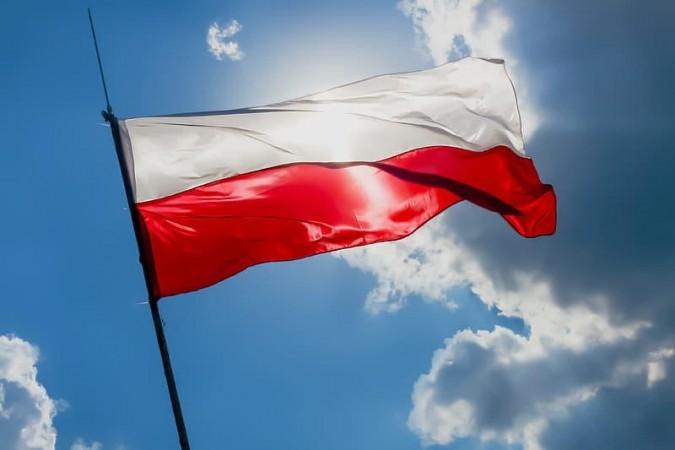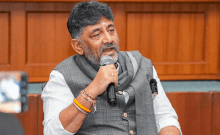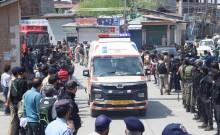
The 09 September 2025 Russian drone incursion into Polish airspace marks a turning point in global security and hybrid warfare. Nearly 20 kamikaze drones crossed from Belarus into Poland, testing NATO's collective defense and exposing vulnerabilities on Europe's eastern flank. This event has triggered complex military, diplomatic, economic, and technological responses with wide-reaching implications. These developments also offer critical lessons and strategic imperatives for India as it confronts its own security challenges.
The Incident and Immediate Strategic Repercussions
On September 9, 2025, a coordinated drone swarm invaded Polish airspace near the Belarus border. Polish forces, assisted by NATO allies including Dutch and French air forces, intercepted most of the drones. Poland immediately called upon NATO's Article 4, invoking consultations due to a direct threat to sovereignty.
Polish Prime Minister Donald Tusk stated, "Our defense will not be carried out by small gestures but by building a large, modern army, supported by every Pole." NATO Secretary General Mark Rutte called the incursion "reckless and dangerous," underscoring alliance unity.
The drones, identified as Gerbera models from Russian production lines but originally based on Iranian designs, likely acted as decoys while collecting reconnaissance data. Piotr Krawczyk, former Polish intelligence chief, remarked, "Russia's main target is the United States. By testing NATO's response, Moscow aims to increase pressure through ambiguity."
Poland closed over 400 miles of eastern airspace until December 9 and deployed an additional 40,000 troops to the border ahead of Russia-Belarus Zapad-2025 exercises, which Warsaw views as rehearsals for broader aggression.
Strategic Implications: Testing NATO's Resolve and Hybrid Warfare Evolution
Russia's maneuver reflects hybrid warfare's evolving nature, where provocations eschew open conflict but incrementally erode opponent resilience. The strategy, often called "salami slicing," seeks to exploit political divisions and test military readiness without triggering war.
Former NATO Secretary General Anders Fogh Rasmussen stressed, "Our democracies require resilience matched to hybrid threats by embracing innovation and unity." The alliance's swift multinational response including F-35 deployments and missile defense augmentation demonstrates adaptation yet reveals gaps, especially in counter-drone measures.
Atlantic Council analyst Aaron Korewa commented, "Moscow's drone tactics show both desperation and strategic innovation designed to divide NATO and destabilize Europe."
Economic and Industrial Ripple Effects

Poland's defense budget leap to nearly 5 percent of GDP in 2026, an estimated $47 billion, is a historic commitment. Poland's deputy finance minister described it as "an investment in protecting our future through security."
This defense surge benefits European and North American aerospace and defense industries. Increased orders for F-35s, Rafales, missile interceptors, and electronic warfare equipment have boosted production and innovation. There is growing emphasis on AI-powered drone detection, swarm countermeasures, and integrated air defense.
Civil aviation in eastern Poland suffered disruptions, with flight cancellations and logistics challenges revealing vulnerabilities. European Commission President Ursula von der Leyen said, "Europe's security depends on investing decisively in defense and technological innovation to protect the skies and our people."
Global Diplomatic Responses
The United States reaffirmed commitments to aid Poland militarily and expand sanctions on Russia. However, former U.S. President Donald Trump offered ambiguous remarks, tweeting, "What's with Russia violating Poland's airspace with drones? Here we go!" highlighting political divides.
Ukrainian President Volodymyr Zelensky called the incursion an "attempt to intimidate NATO and cut supply chains," urging coordinated sanctions and military support.
Israel and Turkey have monitored developments closely. India has adopted a cautious diplomatic line, emphasizing dialogue and stability while quietly accelerating defense modernization.
Lessons and Imperatives for India
India must closely analyze Poland's response to inform its own security strategy.
Vigilant airspace defense is essential. India's former National Security Advisor Ajit Doval said, "Control of the skies is an existential necessity."
Hybrid warfare preparedness requires rapid intelligence sharing, civil-military coordination, and clarity in decision-making.
Accelerating modernization, particularly in indigenous drones, counter-drone technology, and interoperability with Quad and NATO partners, is crucial.
India must balance strategic autonomy with deepening alliances, maintaining flexibility amid global shifts.
Cybersecurity and countering misinformation are vital to protect infrastructure and public trust.
Imperative for Vigilance and Unity
The drone swarms over Poland are a wake-up call. NATO's united and effective reaction shows alliance strength but also the challenges of emerging hybrid warfare. For India and the wider world, modernizing defenses, enhancing cooperation, and increasing resilience are urgent priorities.
NATO Secretary General Jens Stoltenberg said, "We must rise to the challenge with innovation and unity to safeguard our values."
This incident deepens the strategic complexity, accelerates defense industry innovation, and redefines the stakes in global security. Learning from it will shape the future of conflict prevention and response worldwide.
[Major General Dr. Dilawar Singh, IAV, is a distinguished strategist having held senior positions in technology, defence, and corporate governance. He serves on global boards and advises on leadership, emerging technologies, and strategic affairs, with a focus on aligning India's interests in the evolving global technological order.]

















